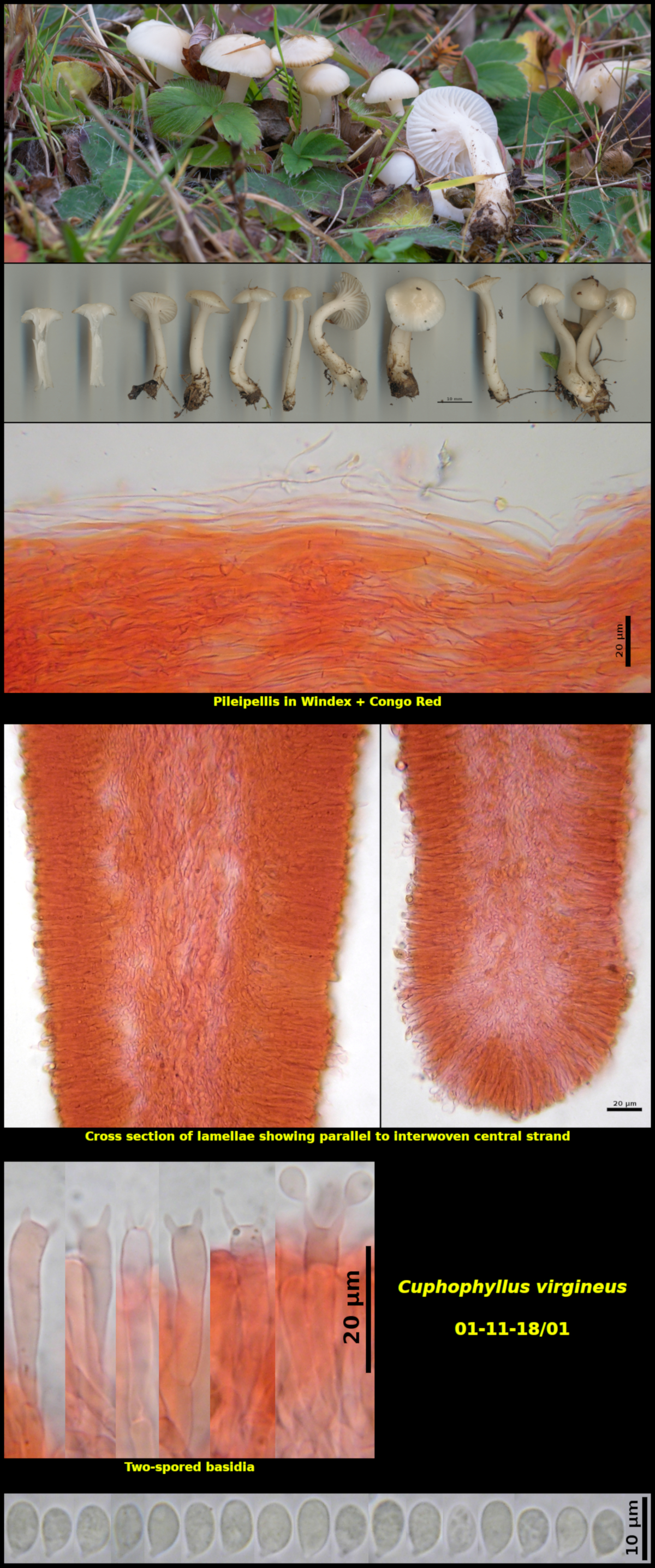Fleshy Fungi of New Brunswick >>
Cuphophyllus virgineus
Cuphophyllus virgineus (Wulfen) Kovalenko

Gregarious to scattered (many) in a rural lawn, without associated trees – Little Lepreau, New Brunswick (01-11-18/01).
Basidiospores white in spore print, broadly dacryoid, smooth, without iodine reactions, 6.2-8.9 x 4.2-5.5 µm, Q = 1.40-1.78 (average[31]: 7.8 x 4.9, Q = 1.58). Basidia 2-spored, without a basal clamp connection. Hymenial cystidia lacking. Pileipellis a hyaline ixocutis several cells deep, with subpellis of parallel hyphae and poorly differentiated from the pileal trama. Stipitipellis a cutis, not gelatinous. Lamellar trama with a parallel to partially interwoven central core giving rise to an interwoven subhymenial tissue.
As discussed under Cuphophyllus borealis, C. vigineus is a member of a group of species still not entirely understood. Following European authors such as Boertmann (The genus Hygrocybe, Fungi of Northern Europe, Vol. 1, 2000), C. virgineus should have a gelatinous pileipellis and predominantly 2-spored basidia. According to North American authors, such as Bird & Grund (Nova Scotian species of Hygrophorus, The Nova Scotia Museum, 1979) and Hesler and Smith (North American Species of Hygrophorus, Univ. Tenn. Press, 1963) the pileipellis should not be gelatinous and the basidia 4-spored. It appears that these authors were working with different species. Our material fits well within the European concept in the above features, but also in having smaller spores than the North american collections and in growing in open grassy areas rather than in the woods.
Photo: D. Malloch (14-09-19/07).